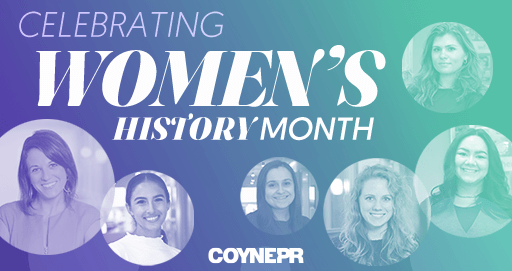Between “CR,” “CSR” and “ESG,” understanding the sustainability space can often feel like alphabet soup. As an Account Executive, still early in my career, I quickly learned the importance of authenticity as more and more brands are looking to promote sustainable development and insert themselves into the conversation. But what does it all mean and how can brands promote their sustainability initiatives without greenwashing?
In recent years, “sustainability” – a term that means meeting the needs of the present without compromising the ability of future generations to meet their own needs – has evolved into the balance of people, planet and profit (also known as “the triple bottom” line or “the three P’s”) and has become a top priority for brands across all sectors.
With the United Nations’ recent urge for climate action, and consumers’ heightened awareness and prioritization of sustainability post-pandemic, it is more important than ever for brands to uphold climate promises and work to make a noticeable impact. However, such efforts should be handled with care, especially when terms like “greenwashing” – false claims to persuade consumers a brand’s products, policies and goals are environmentally-friendly – are at the forefront of consumer’s minds.
With Earth Day around the corner, many brands are jumping at the opportunity to boast their Environmental, Social and Governance (ESG) strategies and eco-friendly wins with media and consumers alike. Before jumping into this conversation, though, it is important to remember that if brands want to talk the talk, they must also walk the walk by making sustainability a year-long commitment.
Remember: When it comes to sustainability, it’s far more important to ensure that audiences truly believe in a brand’s work than to focus solely on a short-term buzz, and it’s our job as PR practitioners to communicate the importance of this to our clients.
At Coyne, we’ve been proud to support our clients’ sustainability efforts – whether it be educating consumers on carbon neutral motor oils, or VTech and LeapFrog’s launch of green electronic learning products and a wooden toy line – and we’ve learned quite a few things along the way. So, ahead of Earth Day, I’ve rounded up a few tips to not only make your PR practice greener, but to help your clients make the world a better place for generations to come:
Familiarize Yourself with the Lingo.
As this space often involves hard data, targets and terms that may be unfamiliar to you, take the time to understand, at least on a surface level, what they mean – especially as it relates to your client. Let’s start with the alphabet soup I mentioned earlier, for example. CR stands for Corporate Responsibility, CSR stands for Corporate Social Responsibility and ESG, the latest phrase to cover sustainability strategies, stands for Environmental, Social and Governance. To further break it down:
- Environmental: All things Planet (i.e., water, waste, renewable energy)
- Social: All things People (i.e., social impact, human rights, community impact)
- Governance: All things Profit (i.e., leadership, investors, policy)
Become An Expert on Your Brand’s Strategy.
If you’re not already aware, be sure to familiarize yourself with your client’s ESG strategy or ESG report (and if this information isn’t publicly available, be sure to ask about it!) because, if your client is looking to zero in on ESG communications, these resources are packed with incredibly useful insights and are a great place to start. Take the time to find those newsworthy ‘nuggets’ of information that will spark media interest – maybe there’s a super cool case study or maybe your client is doing excellent work in an area of ESG that you had no idea about. Plus, this research will tell you what topics are important to the company’s mission and help us, as PR practitioners, uncover the narratives.
Timing is Everything, but Authenticity is Worth More.
Now that you have your golden (or should I say, ‘green’) nuggets, it’s time to share them with the world, right? Well, maybe. Let’s say the current hot topic is solar energy, for instance. Media is covering everything solar across target media outlets and your client is eager to insert their brand into the conversation, but their organization only utilized solar energy in one instance. Sure, the case could be made that the team could pitch the organization’s single example in hopes that media will find interest, but without sustained practice and direct correlation to the topic at hand, media may find the pitch irrelevant. This is a simple example, yes but the same notion applies across the board.
Take the ‘Social’ component of ESG, for example. With many brands making a stance on injustice across different moments in time, especially over the past few years, some statements come off as sincere while others are criticized to be out of line. Brands, with the help of PR practitioners, need to understand which topics and issues are synergistic with their mission and business objectives, as well as know when it’s the right time to insert themselves into the conversation.
Ask Yourself: Can my team make a tangible difference? (Spoiler: Yes!)
There are countless ways in our everyday work we can make greener choices. Take media mailers, for example, which are a large part of what we do as PR practitioners. From packaging supplies such as boxes and crinkle paper to shipping the products, it’s evident that both waste and emissions are produced in this process. Your team has the power to recommend eco-friendly counsel here so, as you discuss media mailers, here are a few questions to ask yourself:
- Does this need to be a media mailer? Can I share a digital coupon or discount code at checkout for free product to allow media to order it directly to their homes?
- Who is on my media mailer shipping list? Who truly seems like the best fit for this mailer? Can I condense this list?
- Can I reach out to media via email to confirm their interest and opt-in to receiving a media mailer before sending?
- Where am I ordering my materials from? Can I encourage my team and client to order recyclable packaging materials? Can I utilize a reusable vessel, such as a wooden crate or cooler, instead of a box?
The possibilities are truly endless and, as we now know, are more important than ever. Now equipped with these tools, I encourage you all to seek out inspiration as you look for ways to incorporate sustainability year-round, because, although Earth Day is only celebrated one day out of the year, every day is Earth Day.




